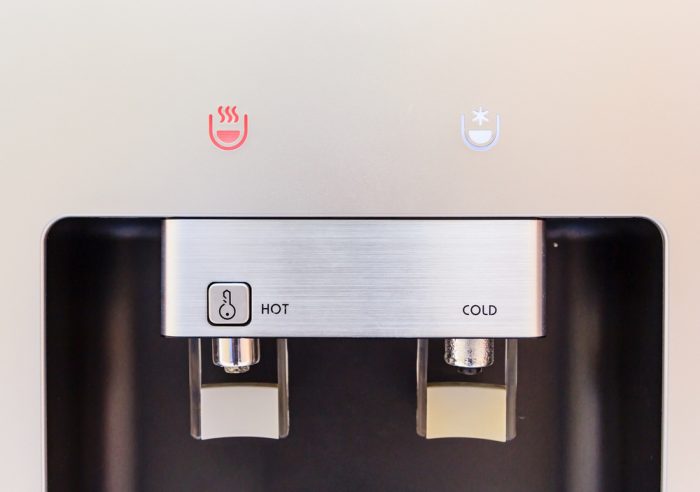
Water dispensers are one of the many appliances that improve human life. After all, humans need water to live, and dispensers provide fresh, filtered, and clean water.
Because these dispensers have the capability of serving the water you drink, it’s important to take care of it. If you’re not careful, you can injure and harm yourself as well as others.
Whether you own a hot and cold water dispenser for the office, or you have one built in at home, you need to know these safety precautions to take with your dispenser.
1. Be Careful of Burning Yourself
If you have both a hot and cold-water dispenser, then you know just how dangerous the hot side can be. You may be surprised to know that most hot dispensers have a safety switch for preventing burns in the first place.
When you need to use the hot water function, be mindful of the location of the opening on the cup or bottle you’re trying to fill. Small openings will cause water to splash or miss the hole and burn your hands. Use a bowl or bigger cups so you don’t get burned.
2. Prevent Back Pain from Refilling It
Another problem you should avoid is injuring your back. Oftentimes, people will strain their back when refilling the water dispenser with a new bottle. This injury is caused by the way you lift. To preserve your back, you must lift the refill properly. This means lifting with your legs and keeping your back straight.
3. Clean It Frequently
Water dispensers can be susceptible and prone to germs. Public dispensers at work are touched by multiple people on a daily basis, and germs are spread from frequent contact. If not handled properly, these germs could contaminate you or those around you with sickness and disease.
The tried-and-true way to exterminate germs is to constantly clean and sanitize your water dispenser. For a public dispenser, you should wipe it down frequently to disinfect it. However, if you have a private dispenser at home, you may not need to clean it every day. Cleaning it once a week will suffice.
4. Check for Mold
Mold presents its own health risks because of the bacteria involved with it. Mold can be hard to track because it builds up in unseen areas. There is normally a pungent smell that is associated with mold. With this in mind, you should check weekly to see if there is mold accumulating in hard-to-see areas on your dispenser. Cleaning it with soap, water, and a sponge should do the trick.
5. Be Cautious of an Electrical Hazard
Whether your dispenser is at home or at the office, you need to practice caution around electrical sockets. Water and electricity don’t mix well and can cause electrocution or a fire.
For this reason, it’s important to plug in the dispenser to the top socket. A general rule of thumb is to keep the dispenser away from the outlet as far as the cord will allow. In the event of a leak, you will keep the office or your family safe from electrical injuries.
6. Watch Out for a Slippery Floor
Water is very slick on concrete, tile, and other hardwood floors. A water dispenser can cause water to pool at the bottom for a couple of different reasons:
- The water dispenser is malfunctioning and leaking
- Spilled water is occurring from those using it
- The dip tray is leaking slowly onto the floor
If any of these happen, they can cause harm if someone were to slip and fall. Concussions and back injuries are just some of the problems that can occur from water pooling on the ground.
Lipsey Water Dispensers
Exercising caution with these reasons will benefit your health and the health of those using your water dispenser. If you are in need of a water dispenser or have questions about water cooler safety, contact Lipsey Water for your two-week, free trial today!
